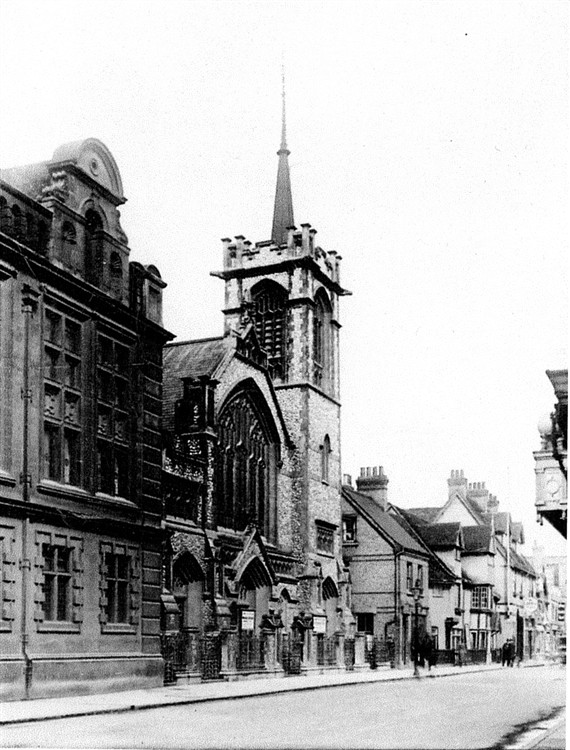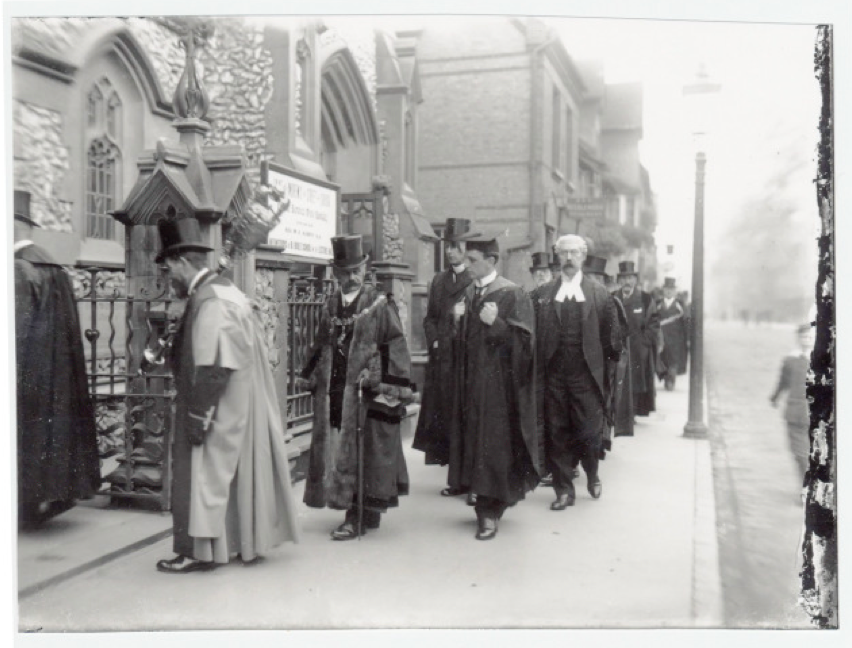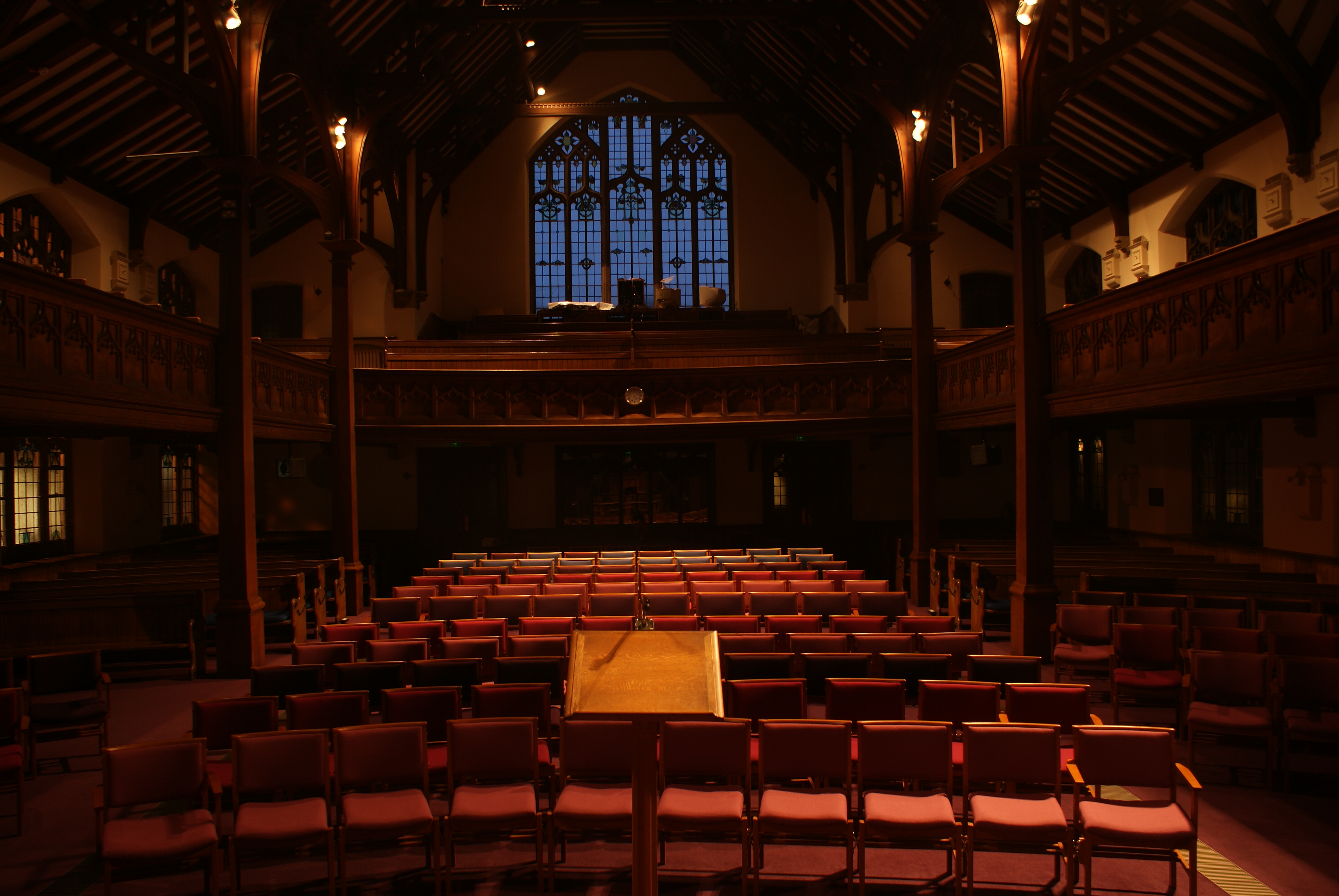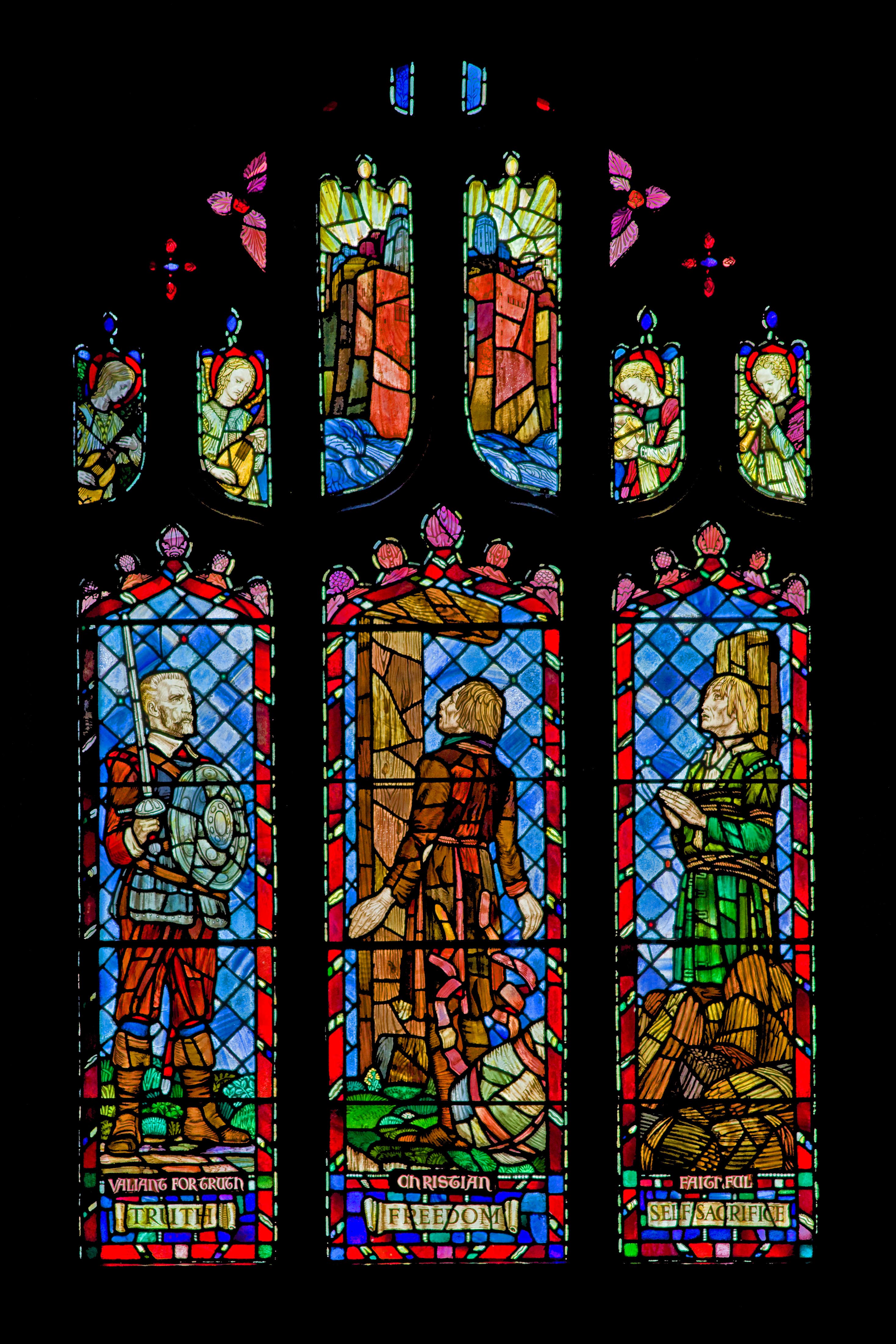History
The History of Christian worship on the site of the present church building begins on 16 April 1721. On that day the newly formed group of Christians took over a former stable and granary for their meeting place.
Forty years later, when the Rev Robert Robinson was called to be minister he found the building 'a damp, dark, cold, ruinous, contemptible hovel’ with a congregation of 34 people. But Robinson was an inspiring preacher and leader (as well as a hymn-writer, some of whose hymns are still sung today), and in 1764 the old buildings were pulled down to be replaced with a chapel large enough to seat 600.
The Rev Robert Hall, a fine scholar and great preacher, came to St Andrew’s Street in 1791, and was soon attracting such crowds that the chapel had to be enlarged to take 800. In 1836 it was replaced by a new one, and the present building took its place in 1903. It is thought that this picture was taken shortly after the completion of the building.
 The appearance of the building (with some minor alterations) dates from its erection in 1903, and was designed by the architects George and Reginald Palmer Baines, who were responsible for many other baptist churches at the beginning of the century. It cost £8000 to build.
The appearance of the building (with some minor alterations) dates from its erection in 1903, and was designed by the architects George and Reginald Palmer Baines, who were responsible for many other baptist churches at the beginning of the century. It cost £8000 to build.
The prominent position of the pulpit symbolises the importance Baptists attach to preaching the word of God relevant to the circumstances of the day. The pulpit is of oak, and dates from 1903, the same year in which the building was erected. The pews were removed and replaced by chairs on 2011 to create a more versatile space.

The Memorial Window above and behind the choir stalls was erected to commemorate members of the congregation who gave their lives in World War I. An additional plaque records those who died in World War II.
The window depicts three characters from John Bunyan’s famous book The Pilgrim's Progress, and symbolises three aspects of the Christian life.
SELF-SACRIFICE: The lights above show the vision of the Celestial City of God, towards which the pilgrims are traveling
